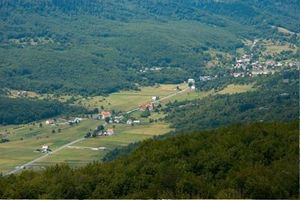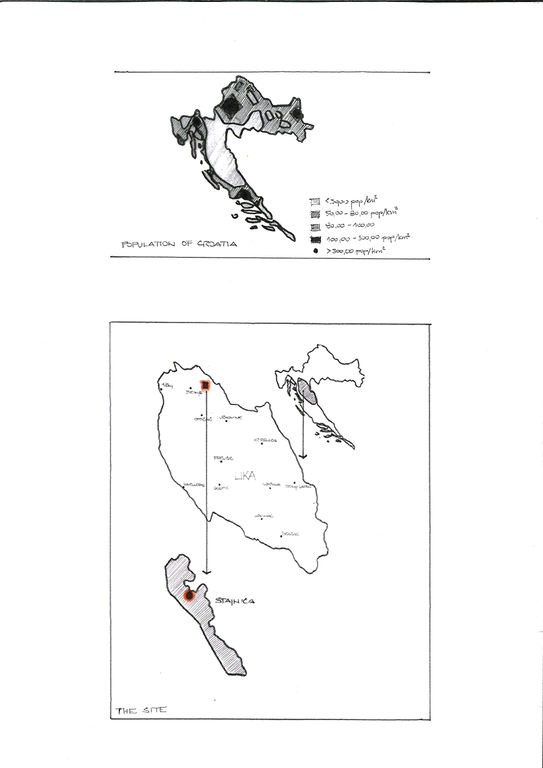Collaborative Design Planting Design Working Group 15: Difference between revisions
(Created page with "---> back to group page working group 15 '''''Please add the title of your case study here, adjust the map coordinates and replace...") |
No edit summary |
||
| Line 1: | Line 1: | ||
---> back to group page [[Planting_Design_2013_-_Working_Group_15|working group 15]] | ---> back to group page [[Planting_Design_2013_-_Working_Group_15|working group 15]] | ||
''''' | '''''Planting Design and the Impact on Lika, Croatia''''' | ||
{| align="right" width="300pt" style="background:Gainsboro; color:black" | {| align="right" width="300pt" style="background:Gainsboro; color:black" | ||
|- | |- | ||
| '''Name''' ||style="background:Lavender"| '' | | '''Name''' ||style="background:Lavender"| ''Landscape of Lika'' | ||
|- | |- | ||
| '''Location''' || style="background:Lavender"|'' | | '''Location''' || style="background:Lavender"|''Lika'' | ||
|- | |- | ||
| '''Country''' || style="background:Lavender"|'' | | '''Country''' || style="background:Lavender"|''Croatia'' | ||
|- | |- | ||
| '''Authors''' || style="background:Lavender"|'' | | '''Authors''' || style="background:Lavender"|''Adriana Papic, De Coninck Ruben, Tilak Nagaraju, Amalia Robredo'' | ||
|- | |- | ||
| colspan="3" align="center" style="background:silver"| [[ | | colspan="3" align="center" style="background:silver"|[[File:Lika.jpg|300px]] | ||
|- | |- | ||
| ||style="background:Lavender"| | | ||style="background:Lavender"| | ||
| Line 20: | Line 20: | ||
| colspan="3" align="center" style="background:silver"| {{#widget:GoogleMaps | | colspan="3" align="center" style="background:silver"| {{#widget:GoogleMaps | ||
|width=300 | |width=300 | ||
|height= | |height=300 | ||
|lat= | |lat=44.766667 | ||
|lng= | |lng=15.166667s | ||
|overviewmapcontrol=yes | |overviewmapcontrol=yes | ||
|largemapcontrol=yes | |largemapcontrol=yes | ||
| Line 33: | Line 30: | ||
== Landscape and/or urban context of your case == | == Landscape and/or urban context of your case == | ||
The association of the words „planting design“, for most people in Croatia, are urban places. For example: parks, playgrounds, in general green open spaces. The aim of these places is a better quality of life for people living in cities. But what about the people living in villages? | |||
However, without a rural- there wouldn’t be an urban context. They're in a reciprocal relationship. By doing measures in urban places, the same measures become an impact on rural places and the same way back. That means, that urban places become preferred, overcrowded, overpriced, generally, too powerful and centralistic, while the relationship between urban and rural becomes bipolar. | |||
The idea as a solution of this problem could be an increased focus to rural places like in the region Lika. By doing planting design in villages of Lika, the villages would become prepossessing for people and attract them to live there. The attention has to be directed towards the compliance of the design and the natural, cultural and historical features of the region. The imigration of people would lead to a better represented landuse which would make the culture and the spirit of these places alive again as well as improve the economic situation. The fertile dolines and valleys as one of the characteristic geographical features of this region would become agricultural land again which fits into the cultural and historical features of this region, too. Metaphorically, it means, that the landscape, nature, culture and the interests of people build a little organism. | |||
This concept could be used in every kind of village according to the natural, cultural and historical features of it. | |||
As time goes by, in future the gap between cities and villages would become smaller while the balance of lifestyle would become better (in cities as well as in villages), and last but not least, the „wild constuction“ in the cities would slow down and decrease, so cities would become relieved and the people living there would have a higher qualitiy of life. | |||
[[File:543px-Ap001.jpg]] | |||
== What are the objectives of your design? == | == What are the objectives of your design? == | ||
'' | ''As landscape architecture and planting design is a profession focused on the well-being of people, the phylosophy of this case is: improvement of quality of life of people living in cities by improving quality of life of people living in villages. | ||
People living in villages like that are living in nature but they don’t experience that nature. A lot of green doesn't make the quality of life better so it doesn't mean that planting design isn't necessary in villages. As I was a child, I was living in a place like that and I know what the quality of life is in places like this. Old empty houses, one street and two directions, no safety for children and no center for social contact, no paths through the nature, you see it but you don't experience it. | |||
That idea should be an avoccation to think about it, in general, to think about other ways, other sollutions for the problem of today. | |||
'' | |||
== Analytical drawings == | == Analytical drawings == | ||
Revision as of 19:17, 17 December 2013
---> back to group page working group 15
Planting Design and the Impact on Lika, Croatia
| Name | Landscape of Lika | |
| Location | Lika | |
| Country | Croatia | |
| Authors | Adriana Papic, De Coninck Ruben, Tilak Nagaraju, Amalia Robredo | |

| ||
|
| ||
Landscape and/or urban context of your case
The association of the words „planting design“, for most people in Croatia, are urban places. For example: parks, playgrounds, in general green open spaces. The aim of these places is a better quality of life for people living in cities. But what about the people living in villages?
However, without a rural- there wouldn’t be an urban context. They're in a reciprocal relationship. By doing measures in urban places, the same measures become an impact on rural places and the same way back. That means, that urban places become preferred, overcrowded, overpriced, generally, too powerful and centralistic, while the relationship between urban and rural becomes bipolar.
The idea as a solution of this problem could be an increased focus to rural places like in the region Lika. By doing planting design in villages of Lika, the villages would become prepossessing for people and attract them to live there. The attention has to be directed towards the compliance of the design and the natural, cultural and historical features of the region. The imigration of people would lead to a better represented landuse which would make the culture and the spirit of these places alive again as well as improve the economic situation. The fertile dolines and valleys as one of the characteristic geographical features of this region would become agricultural land again which fits into the cultural and historical features of this region, too. Metaphorically, it means, that the landscape, nature, culture and the interests of people build a little organism.
This concept could be used in every kind of village according to the natural, cultural and historical features of it. As time goes by, in future the gap between cities and villages would become smaller while the balance of lifestyle would become better (in cities as well as in villages), and last but not least, the „wild constuction“ in the cities would slow down and decrease, so cities would become relieved and the people living there would have a higher qualitiy of life.
What are the objectives of your design?
As landscape architecture and planting design is a profession focused on the well-being of people, the phylosophy of this case is: improvement of quality of life of people living in cities by improving quality of life of people living in villages.
People living in villages like that are living in nature but they don’t experience that nature. A lot of green doesn't make the quality of life better so it doesn't mean that planting design isn't necessary in villages. As I was a child, I was living in a place like that and I know what the quality of life is in places like this. Old empty houses, one street and two directions, no safety for children and no center for social contact, no paths through the nature, you see it but you don't experience it.
That idea should be an avoccation to think about it, in general, to think about other ways, other sollutions for the problem of today.
Analytical drawings
Please add four analytical sketches/drawings (or montages/schemes) of your case. Every group member needs to contribute at least one drawing.
- Analytical Drawings
- Yourfilename1.jpg
analytical drawing 1
- Yourfilename2.jpg
analytical drawing 2
- Yourfilename3.jpg
analytical drawing 3
- Yourfilename4.jpg
analytical drawing 4
Projective drawings
Please add four projective sketches/drawings (or montages/schemes), of course with an emphasis on planting design/vegetation aspects. Every group member needs to contribute at least one drawing representing his/her individual ideas.
- Projective Drawings
- Yourfilename1.jpg
projective drawing 1
- Yourfilename2.jpg
projective drawing 2
- Yourfilename3.jpg
projective drawing 3
- Yourfilename4.jpg
projective drawing 4
Design Synthesis
Please analyse the individual approaches presented so far and evaluate their strengths and weaknesses (you may use the SWOTanalysis model). Try to create a synthesis and represent it with a plan and some sketches. You can still use drawings/sketches.
- Design Synthesis Drawings
- Yourfilename1.jpg
synthesis drawing 1
- Yourfilename2.jpg
synthesis drawing 2
- Yourfilename3.jpg
synthesis drawing 3
- Yourfilename4.jpg
synthesis drawing 4
Summary of the collaborative process
Please reflect on your collaborative design process. Which potentials have you encountered? What was most difficult? What does collaborative design mean for you? (approx 150 words).
Image Gallery
You may add a series of images/photos in addition to the sketches/drawings
- Image Gallery
- Yourfilename1.jpg
image 1
- Yourfilename2.jpg
image 2
- Yourfilename3.jpg
image 3
- Yourfilename4.jpg
image 4
References
* Please make sure that you give proper references of all external resources used.
* Do not use images of which you do not hold the copyright.
* Please add internet links to other resources if necessary.
About categories: You can add more categories with this tag: "", add your categories
